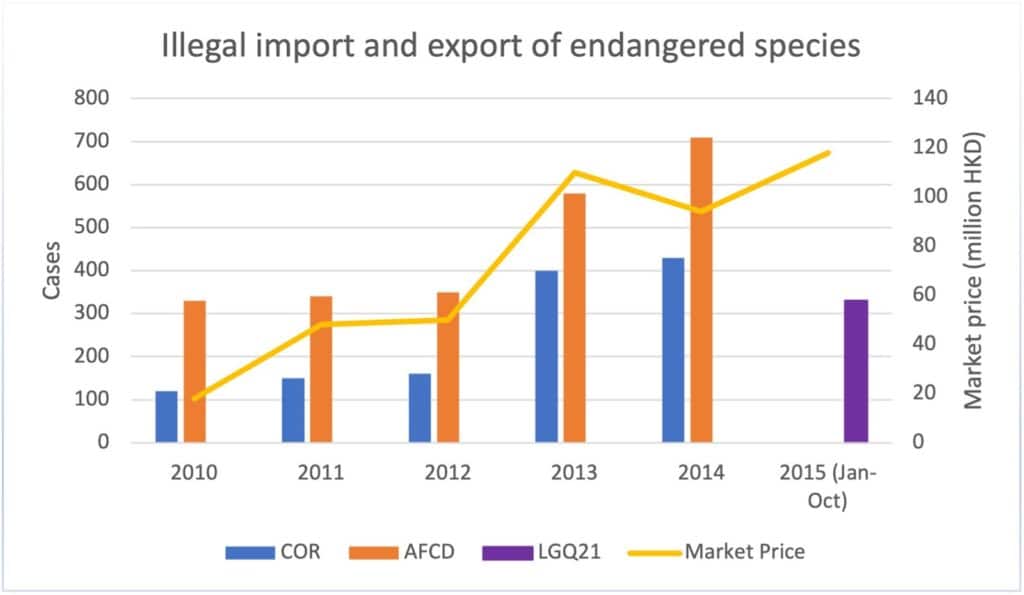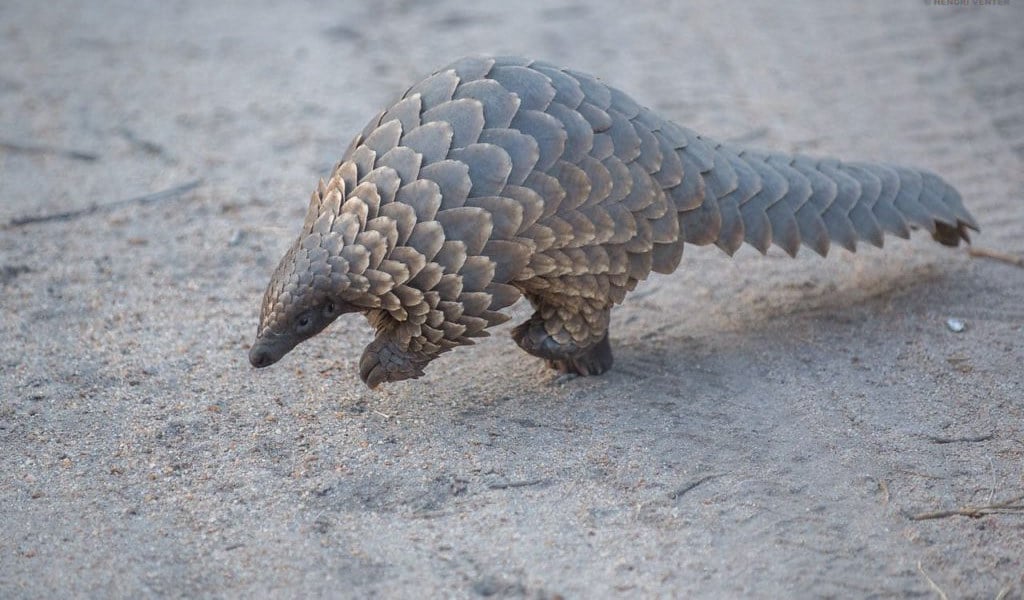Do you know how many endangered species are traded every year because of illegal wildlife trafficking in Hong Kong? As one of the largest hubs for the illegal wildlife trafficking industry, Hong Kong has seen more than 7,000 endangered animals traded illegally between 2018 and 2019 alone.
—
In a report titled “Trading in Extinction-the Dark Side of Hong Kong’s Wildlife Trade’‘ published by Asia-focused nonprofit ADM Capital Foundation in 2018, details how wildlife trafficking and illegal trading of wildlife products such as shark fin and abalone are highly common in Hong Kong, and how despite implementation of policies protecting endangered species of animals and plant ordinance, the city “[serves] as a destination, transit point and market for trafficked products.”
The volume of importing, exporting, and re-exporting of wildlife products in Hong Kong has contributed to its status as a hotspot for illegal wildlife trafficking. In fact, more than a third of all wildlife seizures in mainland China have taken place in Hong Kong.
You might also like: New Bill Seeks to End Hong Kong’s Days as an Illegal Wildlife Trade Hub
Hong Kong’s role as a hub for importing illegal products to China can be dated back to the 1980s. Since the implementation of the Reform and Opening-Up policy in the 1990s allowing China to open its borders, it also saw an influx of illegal products including drugs, electronic products and seafood smuggled into mainland China. While Hong Kong’s economic development benefited from the free trade policy, it also allowed the illegal wildlife trafficking industry to thrive. Derivatives of endangered species such as shark fin and live reef fish have made frequent appearances in Hong Kong to be re-exported to neighbouring Asia cities.
What Policies Are in Place to Protect Endangered Species in Hong Kong?
Hong Kong has implemented policies to supervise wildlife crime since the last century. The Convention on International Trade in Endangered Species of Wild Fauna and Flora (CITES) was implemented through the enactment of the Animals and Plants Ordinance in 1976, which was later replaced by the Protection of Endangered Species of Animals and Plants Ordinance in 2006. The updated Ordinance was put in place to restrict illegal imports, exports, and re-exports of any endangered species, alive or dead, with the exception for those with a license issued in advance by the Agriculture, Fisheries and Conservation Department (the AFCD).
An amendment was later passed in 2018 to provide greater protection to global endangered species and aims to restrict the import and re-export of elephant ivory and elephant hunting trophies, as well as imposing higher penalties on illegal wildlife trafficking of any endangered species.
However, these policies that are put in place have made little impact in curtailing the wildlife trafficking industry in Hong Kong. Take the Acraea issoria for instance; a type of butterfly first recorded to have appeared in Hong Kong in 2002 and has been classified as a rare species by the AFCD. However, since the species falls outside the purview of CITES, it is not protected under the local protection laws.
Similarly with wildlife trafficking, the aforementioned study published by ADM Capital Foundation in 2018 reports that the wildlife crimes have experienced an upward trend since 2010. And as of October 2015, the number of illegal wildlife products has increased up to 400% in comparison to the year previously, and has recorded more than 260 wildlife crime case convictions in 2014 alone. Yet the Hong Kong government continues to deny its reputation as an illegal wildlife trafficking hub.

Figure 1: A graph showing the number of endangered species being illegally imported and exported during 2010 to 2015. COR represented the data from the Environmental Bureau; AFCD represented the actual data recorded from the Agriculture, Fisheries and Conservation Department; LGQ 21 represented the reply to question 21 of the Legislative Council Question on November 25, 2015, from Chan, Kar Lok, member of Legislative Council.
Endangered Species Trafficked in Hong Kong
As of June 2021, news of wildlife trafficking and seizures are still prevalent in Hong Kong and the argument for stricter protection policies is stronger in order to tackle the ongoing problem.
Due to its valuable medicinal benefits, “as many as 200,000 pangolins are trafficked each year,” and it’s very common for the animal to be illegally exported from Hong Kong towards destinations like mainland China and Vietnam. Likewise, the Cuora trifasciata, or the Golden Coin Turtle, which was deemed critically endangered by the International Union for Conservation of Nature and Natural Resources, can be found sold on Hong Kong websites and social media with selling prices going as high as $15,000. Yet almost one fourth of the trades are conducted without license.
Other reptiles such as lizards and snakes have also suffered from wildlife crimes. In 2012, more than 130 breeds with 30% of lizards classified as endangered species were imported to Hong Kong and traded as pets.
Meanwhile, live reef fish are another victim of wildlife crime in Hong Kong. The demand for seafood is sky high in the city and mainland China and some species are considered as luxury products. Species like Epinephelus lanceolatus and Cheilinus undulatus are regarded as haute cuisine, and the lack of regulation has led to frequent illegal fishing and trafficking.
What Can Be Done to End Illegal Wildlife Trafficking?
It is critical to enact stricter policy in order to end illegal wildlife trafficking. Although the Hong Kong government has implemented policies to supervise the situation of wildlife trafficking, they have been ineffective to solve the problem as evident with the continued cases of wildlife seizures in Hong Kong. One of the ways to reform is for the government to bring wildlife crimes under The Organized and Serious Crimes Ordinance (OSCO), which increases stricter restrictions for wildlife seizures.
Another way to go forward is to ensure certification for products and refusing to purchase any animals that have been classified as endangered. Overfishing has brought many fish species to the brink of extinction. Although some species are now protected, many are still fished and sold legally. Consumption of sustainable seafood can also be a simple solution to save reef fishes.
Featured image by: Flickr
You might also like: AR Mural Art Takes Over Hong Kong in Petition for Stricter Wildlife Trafficking Laws

















